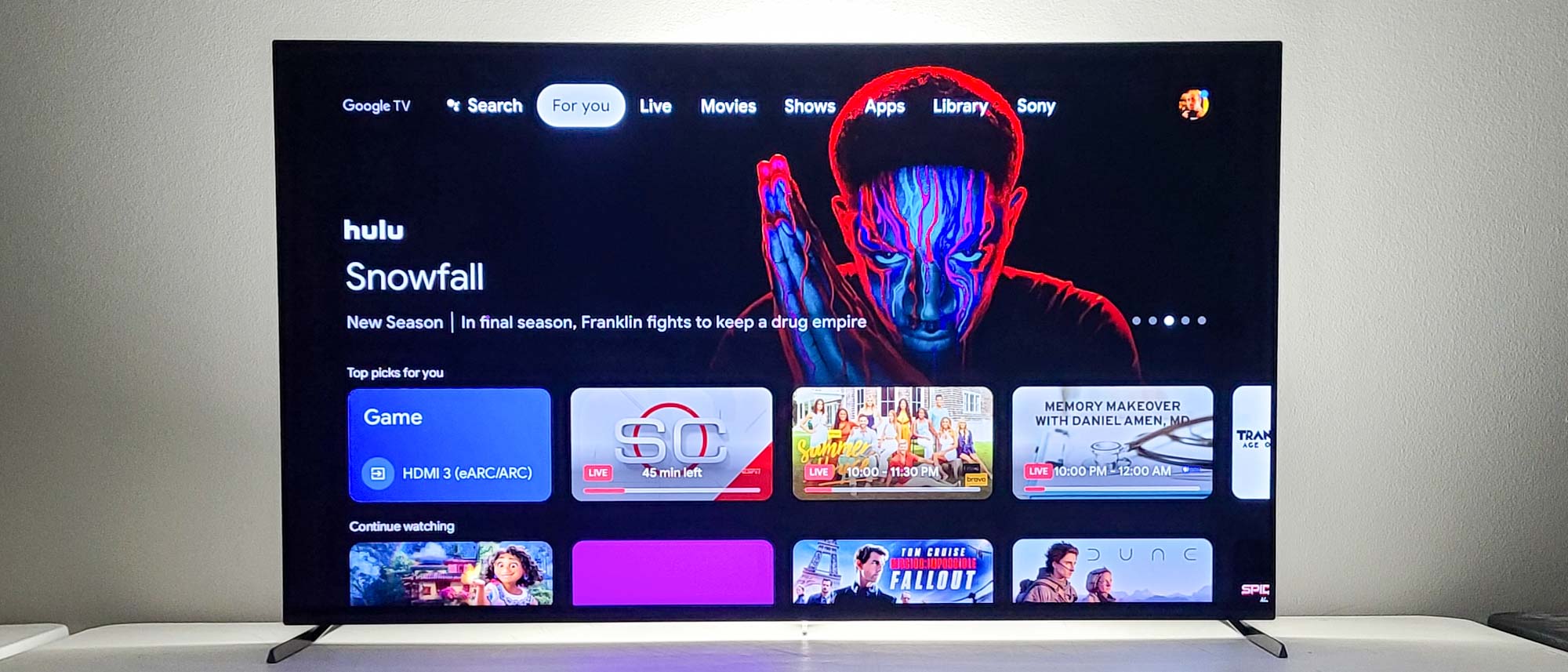Tom's Guide Verdict
It’s not 100% perfect, but the Sony Bravia XR A80K gets so much right — and has such a good-looking picture — that it’s still one of the best OLED TVs you can buy. You get superb picture quality, a robust audio system and intuitive Google TV smart interface, plus a vastly improved remote. This set is just not the best for gaming due to its input lag.
Pros
- +
Dazzling picture quality
- +
Captivating sound system
- +
Highly polished Google TV smart interface
- +
Improved remote control
Cons
- -
Rival OLED TVs perform a bit better
- -
Only two HDMI 2.1 ports
- -
Slightly high input lag
Why you can trust Tom's Guide
Price: $1,499.99
Screen size: 55-inch
Model: XR-55A80K
Resolution: 3,840x2,160
HDR: HDR10, Dolby Vision, HLG
Refresh Rate: 120Hz
Ports: 2 HDMI 2.1, 2 HDMI 2.0, 2 USB
Audio: 50W
Smart TV Software: Google TV
Size (without stand): 48.38x28.13x2.13 inches
Weight (without stand): 39.5 lbs.
The Sony Bravia XR A80K OLED has the singular mission of delivering a scintillating entertainment experience in almost every way. Luckily, that’s a goal it has little trouble achieving — and considering just how good it looks and sounds, it’s something of a minor miracle this TV doesn’t cost more than it does.
To be clear, the A80K isn’t cheap, but it’s well worth the price. You’d expect that given that this is one of Sony’s upper-level OLED TVs, loaded with the company’s full array of picture- and audio-enhancement technologies. Although the A80K is not the best you can find in every individual area given its tight competition, it’s easily one of the best TVs you can buy.
Sony Bravia XR A80K TV review: Pricing and availability
The A80K line of TVs is the only one in Sony’s current range of offerings to offer a traditional OLED panel at a variety of medium and large sizes. The full group of sets comprises:
- Sony Bravia XR-55A80K: $1,499.99
- Sony Bravia XR-65A90K: $1,999.99
- Sony Bravia XR-77A80K: $2,999.99
If you want a smaller OLED TV, the Sony A90K OLED comes in 42- and 48-inch sizes; for something larger, you have the option of the 83-inch A90J, a holdover from the previous model year. For the current state-of-the-OLED-art otherwise, you’ll want to stick with one of the A80K TVs, which we all expect to perform nearly identically, regardless of screen size.
Sony Bravia XR A80K TV review: Design
Like most OLED sets, the A80K has an incredibly thin screen: about one-quarter inch front to back at its thinnest. This is surrounded on the left, right, and top by a black bezel that’s even narrower and on the bottom with a reflective bar that houses both a Sony logo on the lower left and the Power light in the center. Directly under the latter is a power button and a switch for activating the TV’s integrated far-field microphone.
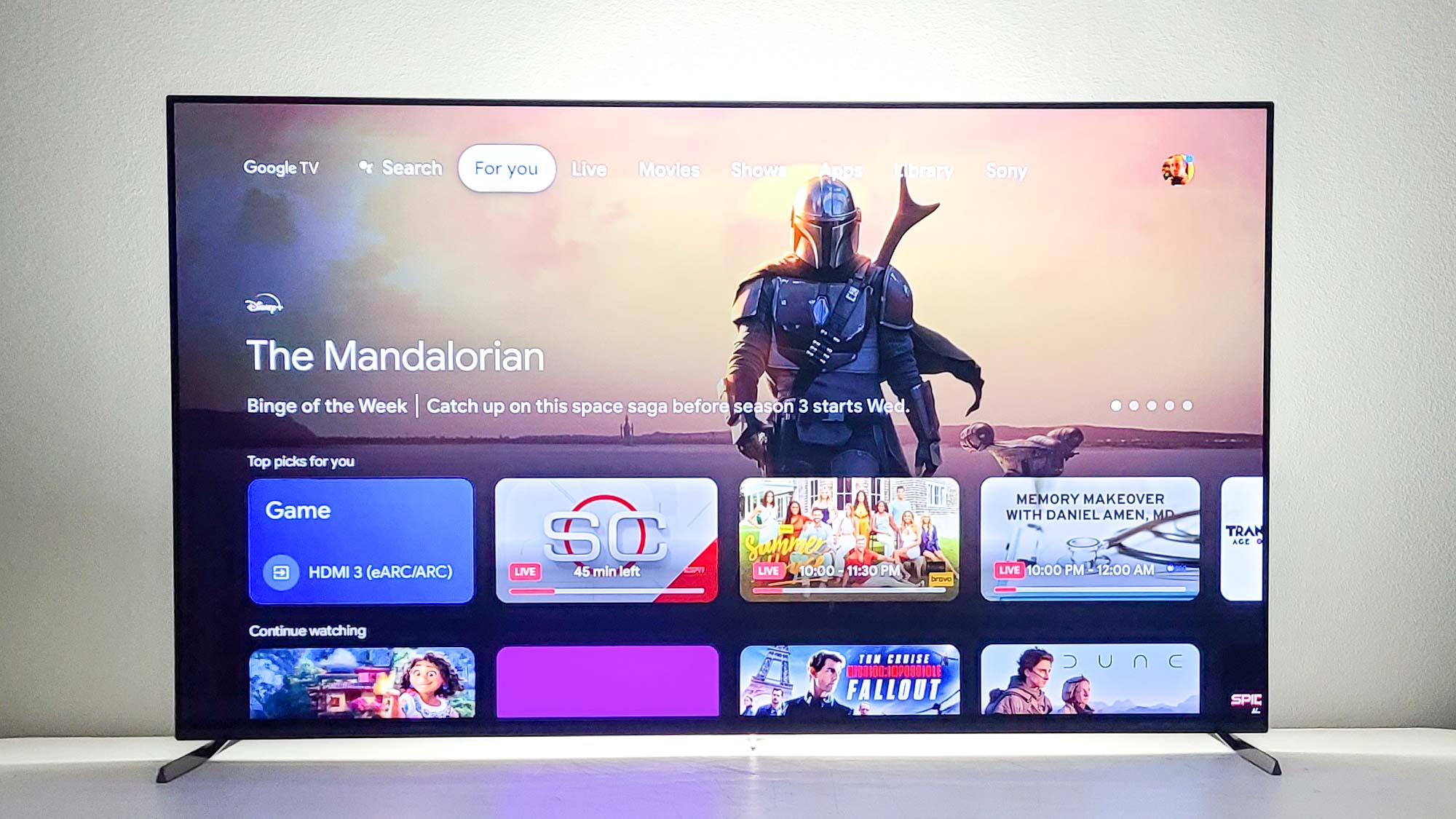
All in all, the 55-inch set measures 48.38x28.13x2.13 inches and weighs 39.5 pounds, in both cases without the stand. (Although the set is technically movable by one person, because of the set’s thinness, we do not recommend doing this if you can avoid it.)

The TV’s extra depth comes from the control box on the rear panel, which is decorated in a field of squares cut into the plastic. A thin, removable panel continuing that design obscures the ports (see the next section) from immediate view, while still allowing cables to snake out the side.
Get instant access to breaking news, the hottest reviews, great deals and helpful tips.

The only other major component of the design is the stand, which is a two-piece, flat-footed affair that requires no screws. The stand may be installed in three positions: one wide, one narrow, and one where the screen is elevated another inch or so from the surface to allow you to position a soundbar just beneath it. Should you prefer to mount the TV on the wall, the 300x300mm VESA holes in the back panel provide that opportunity.
Sony Bravia XR A80K TV review: Ports
The A80K’s power cable plugs into a socket on the right side of the rear panel. All of the other ports are on the left, facing directly out the side so as to be easily accessible: two USB (one rated for 500mA, one for 900mA), S/PDIF optical audio out, the composite video and S-Center speaker port, Ethernet, RS-232C and IR input jacks, the coaxial cable connector, and four HDMI ports.
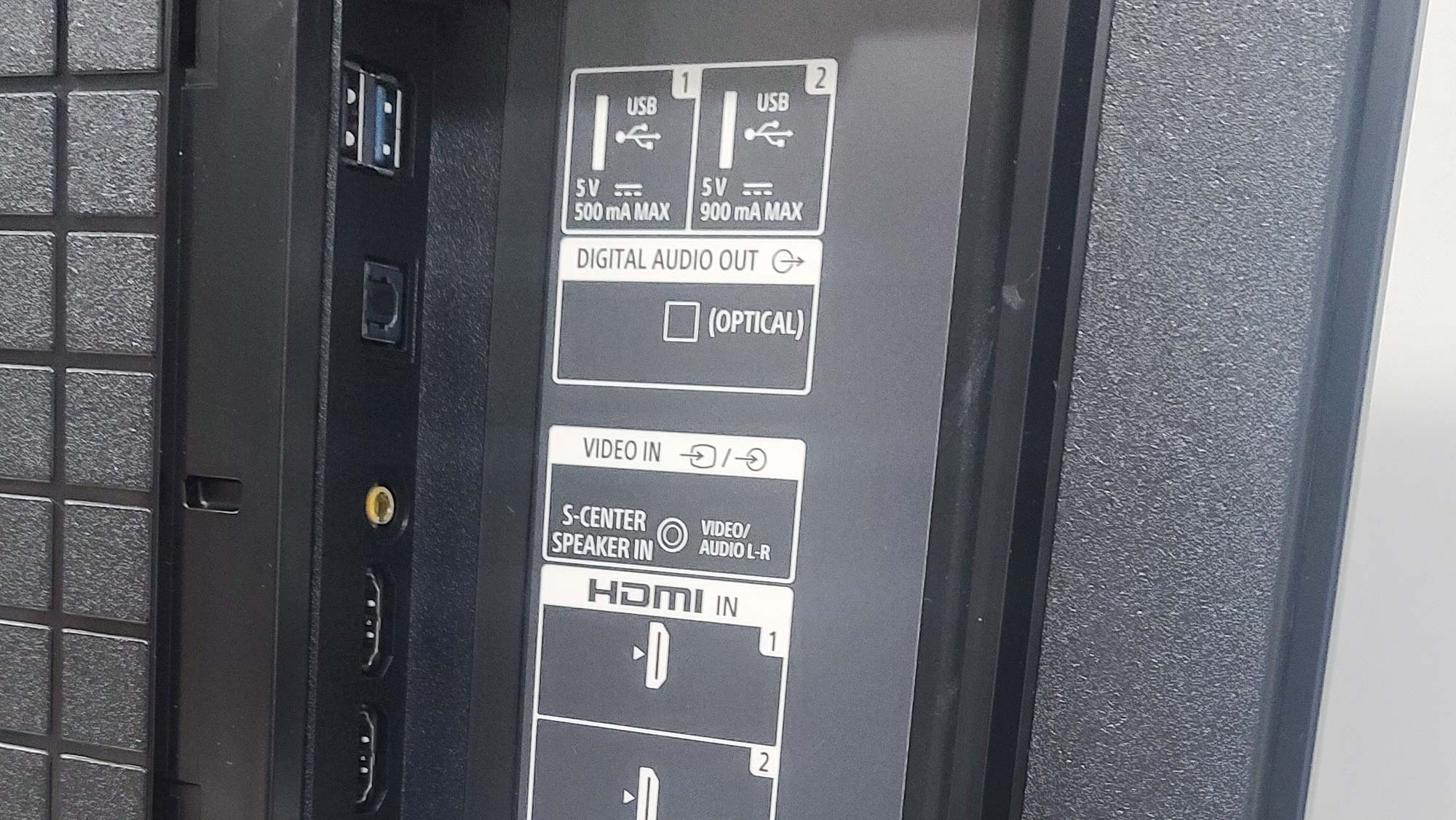
Two of these utilize the newer HDMI 2.1 specification, which offer a higher bandwidth of 48Gbps and features such as Variable Refresh Rate (VRR) and Auto Low-Latency Mode (ALLM). (One of these ports also supports eARC.) The remaining two ports adhere instead to the HDMI 2.0 standard. As it’s not uncommon to see TVs with all HDMI 2.0 ports, the limited number on the A80K is disappointing, if not apt to negatively affect too many users.
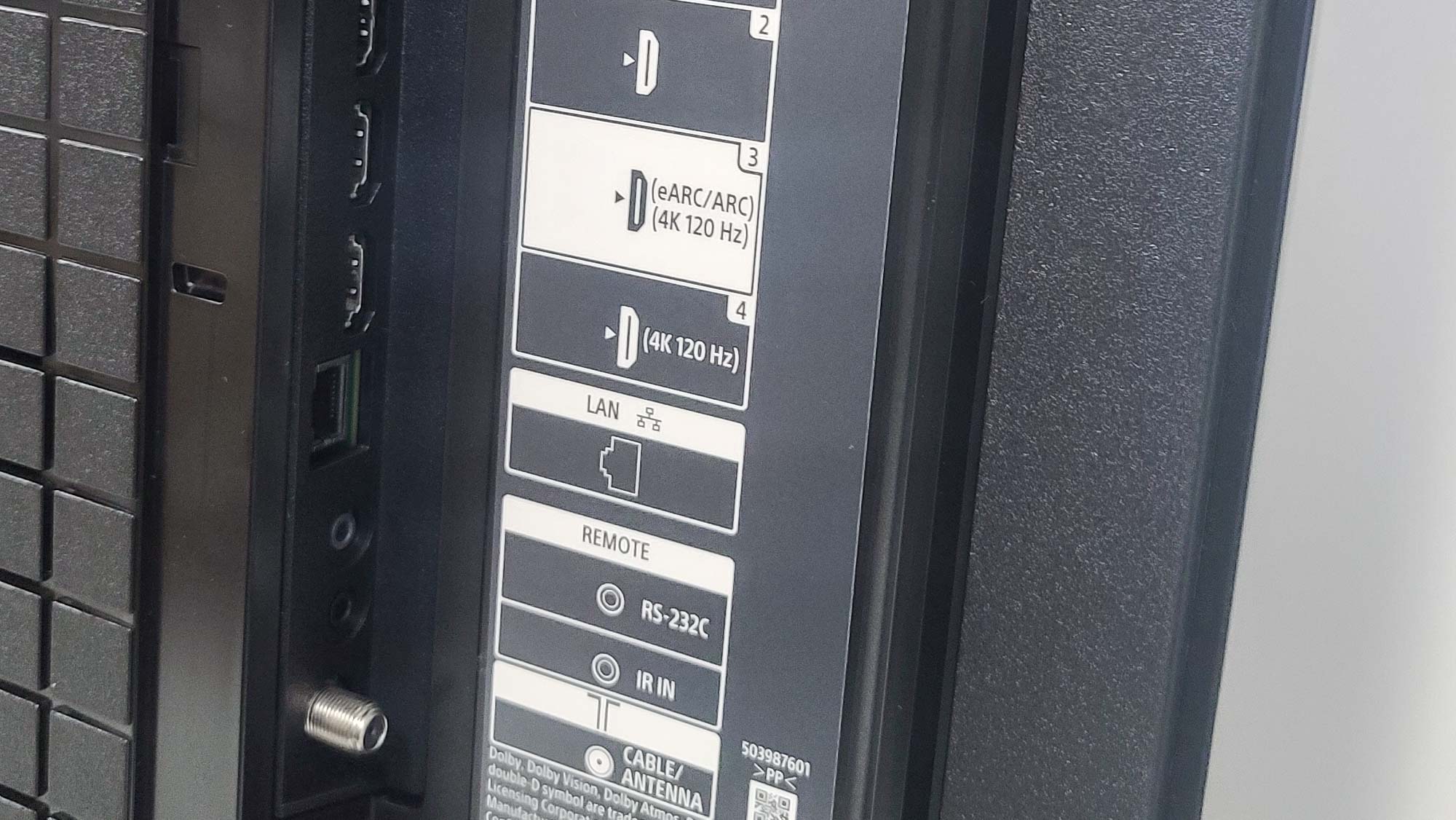
Sony Bravia XR A80K TV review: Performance
All of Sony’s Bravia XR TVs are equipped with what the company calls Cognitive Processor XR, a collection of functions designed to improve the sets’ color, contrast, clarity, and motion handling, so as to better “preserve the creators’ intent”. Not being a mind reader to Hollywood cognoscenti, I can’t say for sure what most makers of movie and TV shows had in mind, but I can report that the A80K makes everything I watched on it look terrific.

The A80K highlights every nuance, so that the black-cowled Caped Crusader looks vividly detailed even against a midnight Gotham cityscape.
This was immediately obvious with titles such as Disney’s Encanto, where the magical greens, blues, and violets of the rich Colombian setting explode off the screen. And in Spider-Man: No Way Home, the comic-book colors and swirling magic beautifully coexist with the grittiness of a multiverse gone haywire.
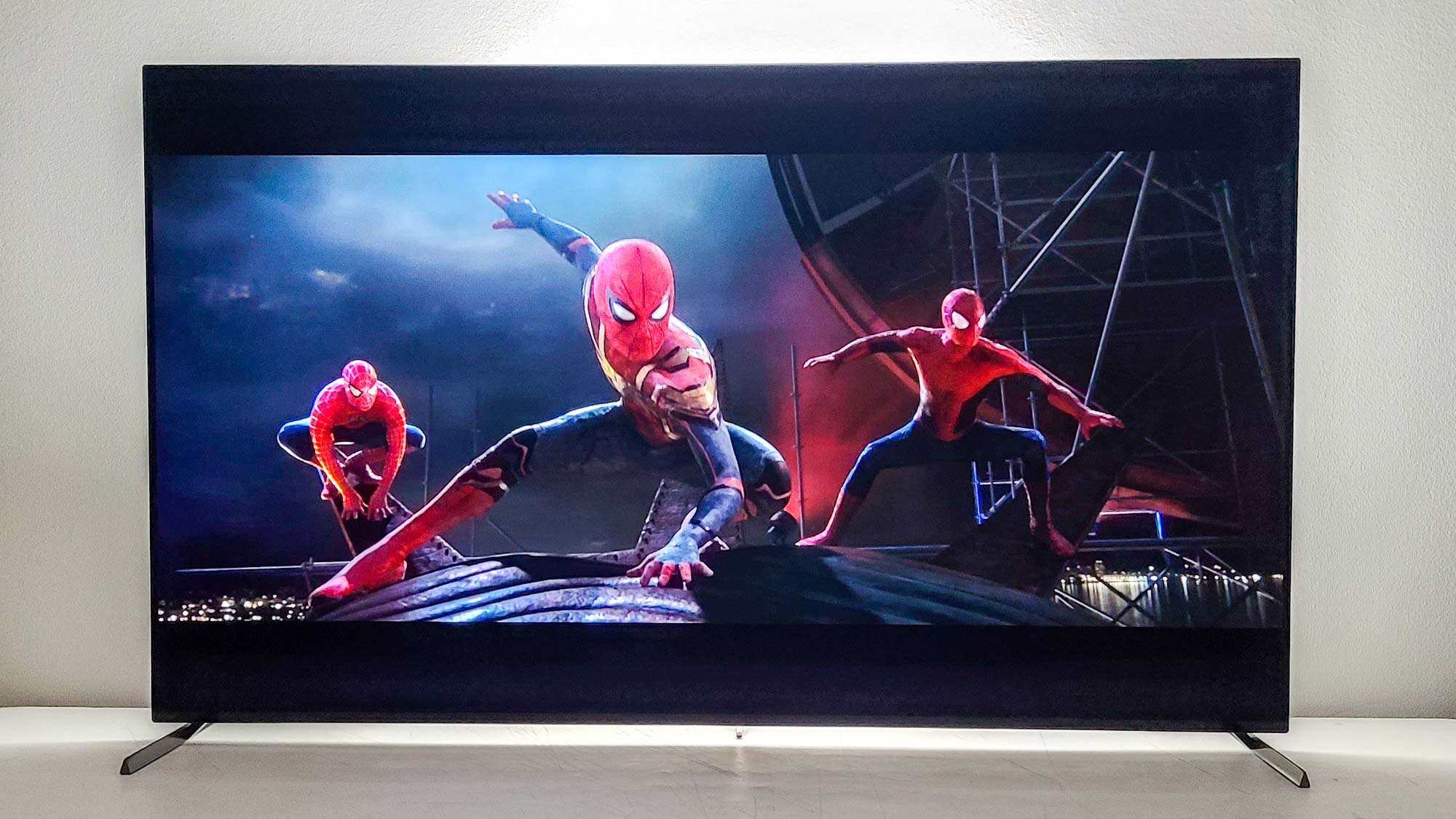
But in some way, the effect may be even more profound where it’s less pronounced. Top Gun: Maverick tends to ornament the dusty browns of its desert flight-range settings with occasional flashes of emerald trees and sapphire skies, all before plunging indoors for more intimate, warmly lit scenes, and the A80K renders it as all a single, glorious piece.

Meanwhile, the tans and blacks that are the order of the day in Denis Villeneuve’s Dune are precisely delineated, and you’re aware of each minute variation that gives the movie’s bleak sandscapes a shocking amount of unexpected life.
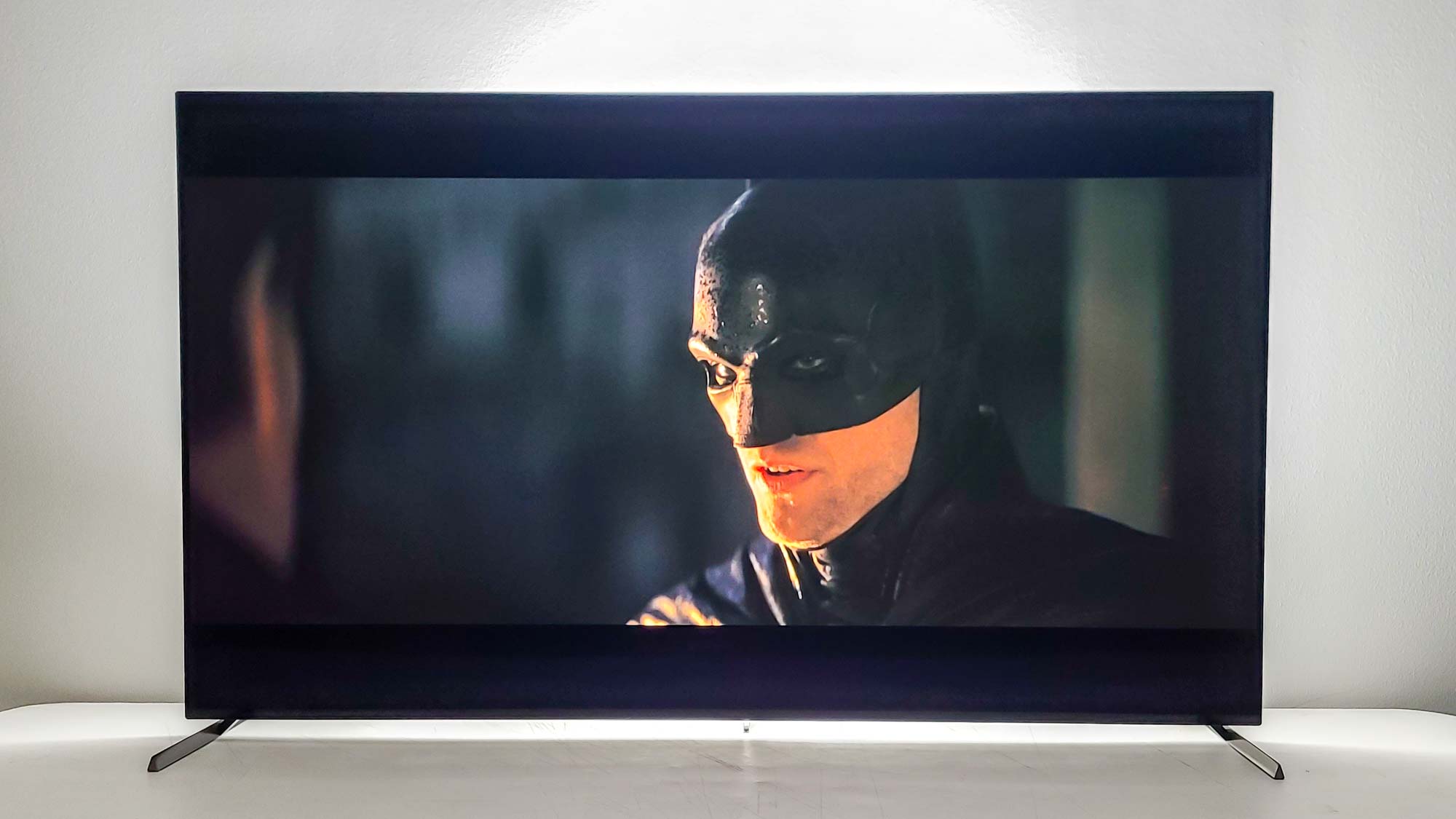
Similarly, The Batman is dependent on the subtle interplay of dark colors punctuated by blinding light, and can easily look like a muddled mess. But the A80K highlights every nuance, so that the black-cowled Caped Crusader looks vividly detailed even against a midnight Gotham cityscape.
Add excellent upscaling capabilities — the 1080p version of Mission: Impossible—Fallout looked almost as good as the 4K-native one — and the superb viewing angles you associate with OLED, where there is barely any color degradation regardless of viewing positions, and the A80K often seems as though it can do it all.
Sony Bravia XR A80K TV review: Test results
Rather than merely trust our eyes, we supplement our content watching with a battery of technical tests designed to examine a TV’s performance at a deeper level, which we perform using an X-Rite i1 Pro spectrophotometer, a SpectraCal VideoForge Pro pattern generator, and Portrait Displays’ Calman calibration software. For more details, see how we test TVs.
The A80K excelled here, too — but with very stiff competition from other OLED models: the Samsung S95B and the category-leading (and practically industry-leading) LG C2.
| Row 0 - Cell 0 | Sony A80K | LG C2 | Samsung S95B |
| SDR Brightness (10%, in nits) | 232 | 228 | 329 |
| Delta-E (lower is better) | 3.1669 | 1.7009 | 3.0184 |
| Rec. 709 Gamut Coverage | 108.82% | 99.98% | 100 |
| HDR Brightness (10%, in nits) | 630 | 794 | 1050 |
| UHDA-P3 Gamut Coverage | 99.33% | 99.16% | 99.76% |
| Rec. 2020 Gamut Coverage | 74.58% | 73.84% | 74.97% |
In our SDR tests, the Sony’s 232-nit brightness was right on par with the LG’s 228 nits, but noticeably behind the Samsung’s 329 nits. And theLG surpassed both the Sony and Samsung in color accuracy, with the trio’s lowest Delta-E value (lower results are better). And its SDR colors tended just a touch toward oversaturation, whereas the others were basically spot-on.
With HDR, the story was largely the same. In the sets’ closest-to-calibrated modes, the Samsung was the champ throughout, with the Sony’s brightness significantly lower. However, Sony’s coverage of the UHDA-P3 and wider Rec. 2020 color gamuts was ahead of the LG C2 and slightly behind Samsung.
Considering the A80K costs slightly less at our tested 55-inch screen size, that’s pretty impressive — and it becomes even more so when you factor in that the A80K actually has a much better looking picture thanks to some irregularities with the S95B’s screen.
Dollar for dollar and feature for feature, the A80K is a suave performer — whether appraised by the meter or the eye.
Sony Bravia XR A80K TV review: Audio
TV sound is tricky and unforgiving. It’s an area that even the best options leave quite a bit to be desired. This isn’t true of the A80K, however, which like Sony’s other high-end sets uses what the company calls Acoustic Surface Audio+ to transform the screen into an integral part of the speaker system.
Everything you listen to benefits. Action movies with complex, layered sound, such as Top Gun: Maverick, are robust: loud, yes, but so clearly layered that there is never any mushiness when dialogue, music, and sound effects are all unfolding at once. (Though its 3D sound, courtesy of Sony’s XR Surround, is highly immersive; the A80K also supports Dolby Atmos.)
Bass is a stumbling block for most TVs, the A80K has no trouble with it; it’s a critical element of The Knife’s “Silent Shout,” but the A80K produced clarion tones and a definite, distortion-free thumping throughout. A soprano solo track we use to test the opposite end of the frequency range was every bit as good, with the climactic high B-flat at the end ringing a pristine silver right up to the top of the volume range—only at the uppermost extreme (95 or higher) could we detect even the tiniest misstep in the sound production, and that was minor at its worst.
Although you may want to augment your home setup with one of Tom’s Guide’s best soundbars, you’ll be missing out on very little if you just let the integrated sound hardware and the screen do their work.
Sony Bravia XR A80K TV review: Gaming
If the current generation of Sony TVs has a weak point, it’s with input lag. We measured the A80K with a Leo Bodnar 4K Lag Tester and got a result of 16.2ms. Although that number, which is in line with what we’ve seen from other Sony TVs, isn’t bad (we give passing grades to anything under 20ms), it’s also not on par with the latest sets from, say, LG and Samsung, which have no trouble smashing the 10ms barrier we designate as the boundary for great gaming.

There are plenty of other gaming features on the A80K, however. Many start with those HDMI 2.1 ports, which deliver 4K resolution at 120Hz, for supremely smooth play in even the most frantic situations. And certainly, Assassin’s Creed Valhalla looked and felt terrific, with its reflective, snow-choked mountains seemingly radiating with cold and the coastal raids that are important to its gameplay every bit as smooth, frantic, and exciting as you’d hope.
But the PS5 has a special synergy with the A80K that unlocks additional functionality. Auto HDR Tone Mapping optimizes the PS5’s settings to take full advantage of the TV’s capabilities. And Auto Genre Picture Mode, a close cousin to ALLM, will further ensure you’re always using the right picture mode for whatever else you may be trying to watch.
Sony Bravia XR A80K TV review: Smart TV interface
Google TV remains both Sony’s smart TV interface of choice and one of the best options on the market. Integrating the power and ubiquity of Google’s search system makes it easier to find what you’re looking for, true, but it also allows you to incorporate your Google activities on other computers and phones to effortlessly create a more unified system.

The A80K as a whole is easy to navigate, as the interface itself is clean and intuitive. A menu bar at the top of the home screen gives you easy access to Search (also available via the remote or the TV’s microphone), Live TV, Movies, Shows, Apps, your personal content library, and a collection of Sony’s own curated studio, branded, and marketing materials. Below this bar is a “Top picks for you” section, which is populated with choices from the various content sources you subscribe to; below that is the “Your apps” bar; then there’s “Continue watching”; and finally various collections of releases that are either popular or drawn from your own personal taste. It’s never a challenge to find something to watch, and, unlike many other companies’ recommendations, Sony’s seem especially relevant and even good (or at least mine do).
Free with the A80K is a 12-month subscription to Bravia Core, Sony’s high-quality, proprietary streaming service, along with five credits for purchasing any movie or show you want. There’s no harm in activating your subscription to gobble up these gratis goodies, of course, but Bravia Core leaves a bit to be desired. Its library of titles is, as you might imagine, Sony-heavy, and not always especially compelling. Unless you’re really into newer titles such as the documentary Whitney Houston: I Wanna Dance with Somebody; The Woman King; Lyle, Lyle, Crocodile; Bullet Train; Uncharted; and Morbius, as well as still-older titles, a more varied option on our best streaming services list such as Netflix, Amazon Prime, or HBO Max is likely to serve you better.
The A80K also supports Sony’s Bravia Cam, a set-top camera that expands the capabilities of the TV. In addition to video chat, it also adds a series of simple gesture controls and enables a setting that will automatically adjust the picture and sound based on qualities in the room at any given moment (such as how many people are present and where they’re sitting). The A95K and the Z9K come bundled with one, but to add a Bravia Cam to the A80K, you’ll need to shell out $199.99 — which probably isn’t worth it for most people (though Sony promises firmware updates to allow it to do more in the future).
Sony Bravia XR A80K TV review: Remote control
Sony’s remote control has received a major revamp for this current round of TVs, with the new one shorter (7 inches versus 9.3 inches) and narrower (1.5 inches versus 1.8 inches) than its predecessor, but with little substantive functionality lost.

Below the Power button in the top-right corner are the TV, Settings, Inputs, Numbers, the directional pad, Back, Home, Google Assistant, Volume and Channel controls, Mute, Play, Pause, and Guide. Below those are four dedicated shortcut keys for YouTube, Netflix, Disney+, and Amazon Prime Video.
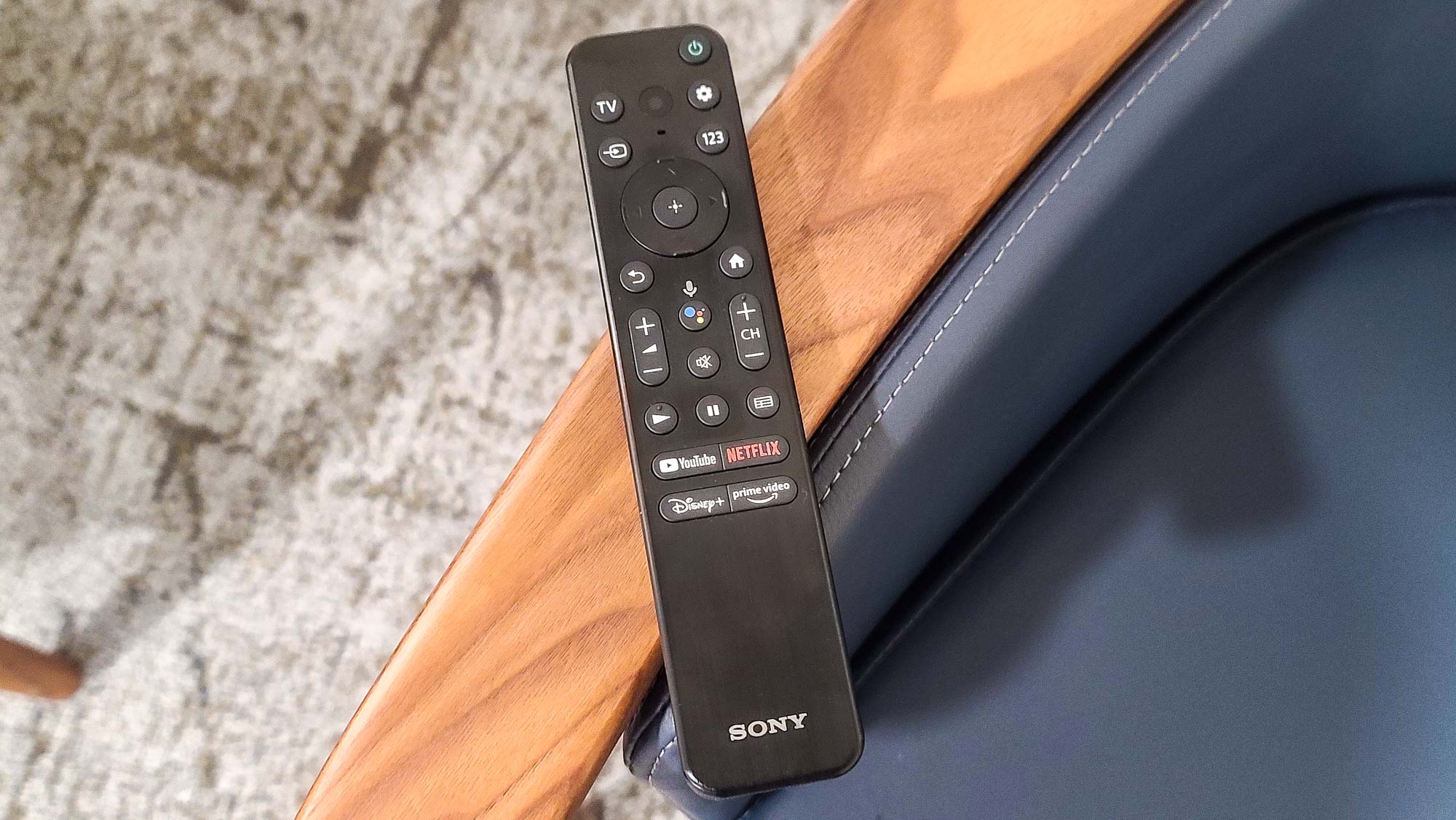
Gone are the 10-key pad and Color buttons and a few specialized controls (such as Jump, Subtitle, DVR, and Record), and some people will undoubtedly miss this. But everything else has been organized in a tidier, more compact way, that helps cement this remote as one of the best there is. (The Premium model, which is included with the A95K and the A90K, adds button backlighting and a feature for finding the remote if you lose it; those do take this remote design to the next level, but the standard version is still good without them.)
Sony Bravia XR A80K TV review: Verdict
The Sony Bravia XR A80K is an outstanding TV, but it’s not perfect. You can get a brighter picture and (marginally) richer colors with the Samsung S95B, for example. And both it and the LG C2 have more HDMI 2.1 ports and richer gaming capabilities, if that’s what you care about.
It’s not even the best Sony set there is (that would be the Sony A95K OLED, which costs a lot more), and it’s virtually the same as its immediate predecessor, the Sony Bravia XR A80J.
But, if you’re shopping for a new TV, the Sony Bravia XR A80K is an outstanding overall package you’ll look forward to unwrapping every time you turn it on.
Matthew Murray is the head of testing for Future, coordinating and conducting product testing at Tom’s Guide and other Future publications. He has previously covered technology and performance arts for multiple publications, edited numerous books, and worked as a theatre critic for more than 16 years.
